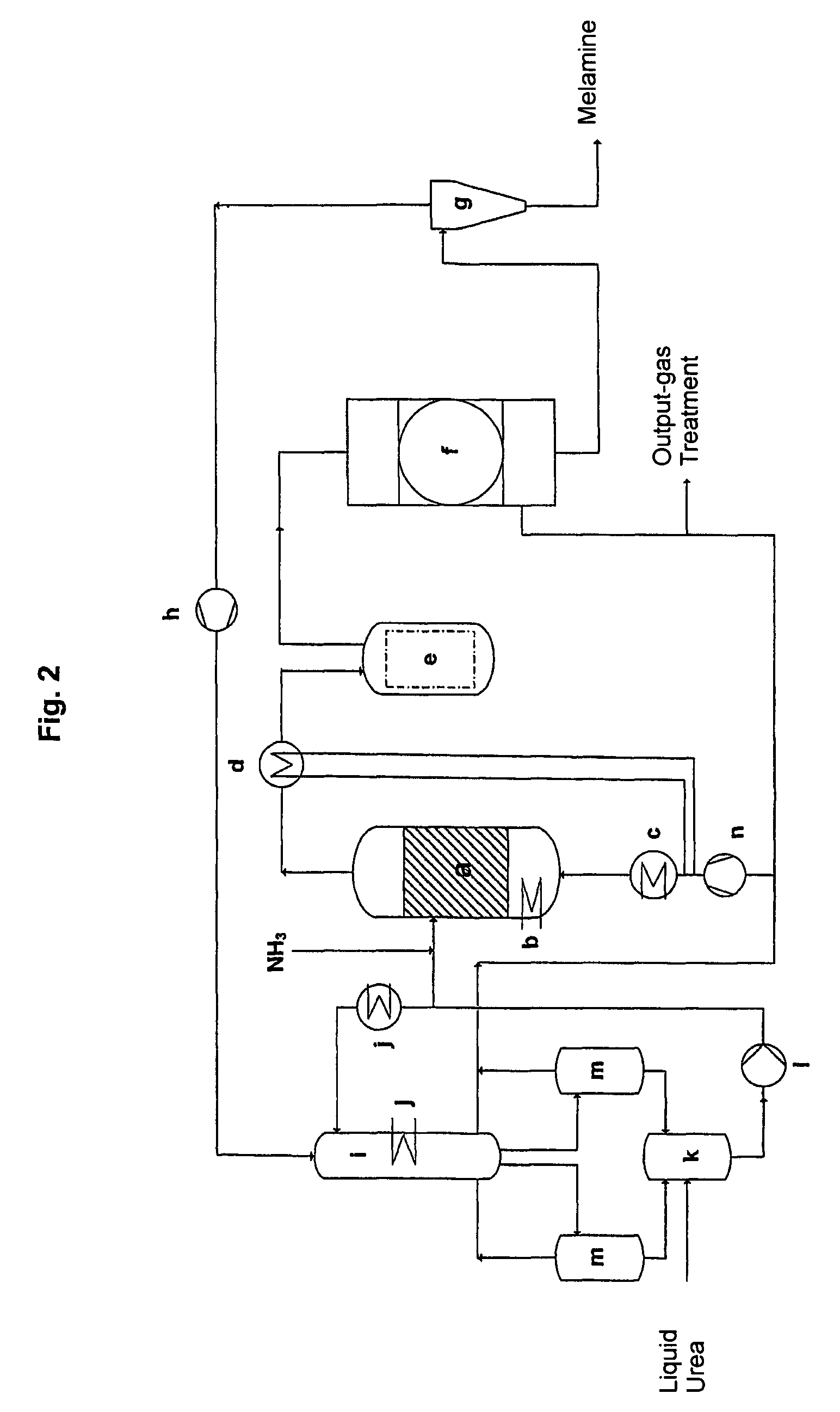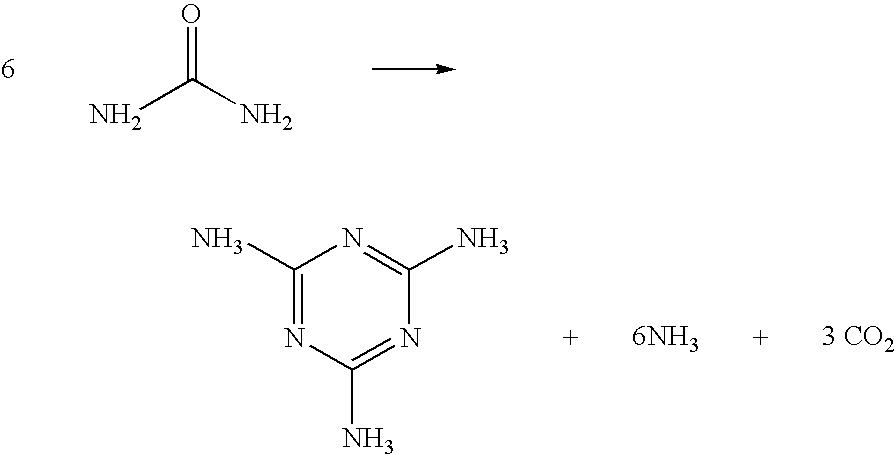Method for producing melamine with heat recovery
a technology of heat recovery and melamine, which is applied in the direction of climate sustainability, sustainable manufacturing/processing, chemical industry, etc., can solve the problems of reducing the service life of the plant, so as to reduce the risk of premature desublimation. , the effect of preventing the undesirable premature desublimation
- Summary
- Abstract
- Description
- Claims
- Application Information
AI Technical Summary
Benefits of technology
Problems solved by technology
Method used
Image
Examples
example 2
[0023]The gas from the reactor a in the same composition and with the same pressure and temperature as in Example 1 is cooled in a downstream cooler to 340° C. The cooling-medium used is the gas that is required for fluidizing the fluidized bed. For this purpose, the gas coming from the compressor is guided on the jacket side of a tubular heat exchange. The compressed gas will heat from approximately 240° C. to 315° C. The thermal conductivity coefficient (k-value) will take on a value of approximately 160 W / m2° C., as in Example 1. When the hot and cold gases are routed in parallel flow through the heat exchanger, the lowest inside wall temperature of the pipe will be 315° C. This safely prevents premature and undesirable desublimation of melamine. The resulting logarithmic mean temperature difference is approximately 73° C. For the same amount of heat to be removed as in Example 1, a heat exchanger with a surface smaller by a factor of 1.8 is required. As a result, less heat is su...
PUM
 Login to View More
Login to View More Abstract
Description
Claims
Application Information
 Login to View More
Login to View More - R&D
- Intellectual Property
- Life Sciences
- Materials
- Tech Scout
- Unparalleled Data Quality
- Higher Quality Content
- 60% Fewer Hallucinations
Browse by: Latest US Patents, China's latest patents, Technical Efficacy Thesaurus, Application Domain, Technology Topic, Popular Technical Reports.
© 2025 PatSnap. All rights reserved.Legal|Privacy policy|Modern Slavery Act Transparency Statement|Sitemap|About US| Contact US: help@patsnap.com



